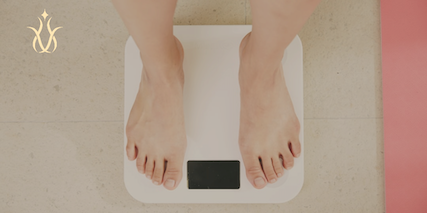How many calories you should consume each day depends on several factors, including your age, gender, metabolic rate, physical activity, and health goals. This comprehensive guide breaks down everything you need to know to calculate your ideal daily calorie intake. Whether you’re looking to lose weight, gain muscle, or maintain your current weight, find out how to adjust your calories to meet your specific needs. Plus, get practical tips on tracking your intake and making informed food choices to support your energy levels and overall health.
Introduction
Do you ever wonder just how many calories you should consume each day? Understanding caloric intake isn’t just about counting numbers—it’s about fuelling your body efficiently and effectively. Let’s dive into the world of calories and explore why they are pivotal to maintaining a healthy lifestyle.
What are Calories?
Simply put, calories are the units of energy that power every action your body undertakes—from breathing and thinking to exercising and healing. Every bite of food and sip of drink contains calories that your body converts into energy. However, not all calories are created equal, so understanding your daily caloric needs is crucial.
Why are Calories Important?
Calories matter because they are your body’s fuel. However, the amount of fuel each person needs can vary widely based on several factors like age, gender, and activity level. Consuming either too many or too few calories can lead to health issues such as weight gain, nutritional deficiencies, or even metabolic disruptions. That’s why getting your caloric intake just right is akin to fine-tuning a high-performance engine.
The Purpose of This Guide
This guide aims to explain how to calculate your ideal daily calorie intake with precision. We’ll explore the scientific foundation behind caloric needs and offer practical advice on how to apply this knowledge to your everyday life. Whether you’re looking to lose weight, gain muscle, or simply maintain a healthy lifestyle, understanding your caloric needs is the first step on your journey to a healthier you.
Stay tuned as we break down the complexities of metabolism, introduce tools for tracking your calories, and debunk common myths about dieting. By the end of this guide, you’ll know how many calories you should consume and how to make each calorie count towards your overall health goals. Let’s get started on this path to nutritional empowerment!
Understanding Caloric Needs
Determining how many calories you should consume each day is more than a simple calculation. It requires a deep understanding of your body’s energy requirements and how they fluctuate based on various factors. Let’s break down the essential concepts and influences that determine your daily caloric needs.
Basic Concepts
Total Daily Energy Expenditure (TDEE)
Total Daily Energy Expenditure, or TDEE, is the total number of calories you need to consume in a day to maintain your current weight. It comprises several components: Basal Metabolic Rate (BMR), the energy expended through physical activity, and calories used for digestion, also known as the thermic effect of food. Understanding your TDEE is pivotal because it tailors your diet plan to your unique energy needs.
Basal Metabolic Rate (BMR)
Your BMR is the number of calories your body needs at rest to maintain vital functions like breathing, circulation, and cell production. It accounts for about 60-75% of your daily calorie expenditure. Calculating BMR involves factors like age, weight, height, and sex. Several formulas exist for this calculation, with the Mifflin-St Jeor Equation being one of the most accurate and commonly used.
Calorie
A calorie is a unit of energy. In scientific terms, it’s defined as the amount of heat required to raise the temperature of one gram of water by one degree Celsius. Dietary calories refer to kilocalories (kcal), where one kcal equals 1,000 true calories. This measurement helps us quantify the energy value of foods, guiding our dietary choices and energy balance.

Factors Influencing Caloric Needs
Age
As we age, our caloric needs generally decrease. This change is due to a natural loss of muscle mass as we grow older, which lowers our BMR. The reduction in physical activity that often accompanies ageing also plays a significant role. Understanding this shift is crucial for managing weight and health through the years.
Gender
Men and women have inherently different caloric requirements. Generally, men have a higher BMR due to larger amounts of lean muscle mass. Additionally, hormonal differences between genders also influence energy metabolism, making it essential to consider these factors when calculating daily calorie needs.
Activity Level
Your activity level significantly impacts how many calories you burn each day. Sedentary lifestyles, common in today’s office-based environments, require fewer calories. In contrast, people with high activity levels, like athletes or construction workers, need significantly more calories to meet their energy demands. It’s important to assess your activity level accurately to avoid caloric excess or deficiency.
Metabolism
Metabolism varies from person to person, influenced by genetics, hormonal balance, and even environmental factors. Some people may have a naturally higher metabolic rate, allowing them to consume more calories without gaining weight, while others may find their metabolism slower, necessitating fewer calories. Understanding your metabolic rate can help tailor your diet more effectively, ensuring you consume the right amount of calories to support your lifestyle.
By understanding these fundamental concepts and factors, you can better manage your caloric intake and ensure that you fuel your body optimally for health and vitality.
Calculating Your Caloric Needs
Knowing your daily caloric requirement is a cornerstone of managing your health and fitness. With the right tools and understanding, you can fine-tune your diet to meet your body’s exact needs. Here’s how to utilize the latest tools and techniques for precise caloric tracking and apply this knowledge to various personal health goals.
Tools and Techniques
Calorie Calculators
Calorie calculators are incredibly useful for giving you a ballpark figure of your daily energy needs. These tools typically require inputs like age, gender, height, weight, and activity level to estimate your Total Daily Energy Expenditure (TDEE). While they offer a convenient starting point, it’s important to remember their limitations. They can’t account for individual metabolic variations and might not be accurate for everyone, particularly those with medical conditions or those at extreme ends of physical activity scales.
Fitness Trackers
Modern fitness trackers go beyond basic step counting. Many are equipped with sensors that estimate calorie burn by tracking your heart rate and movement intensity throughout the day. They can offer a more dynamic insight into your daily energy expenditure, which is especially useful if your activity levels vary significantly from day to day. However, while more accurate than generic calorie calculators, they still have a margin of error and should be used as part of a broader approach to health monitoring.
BMR Calculator
For those who need a more detailed understanding of their baseline caloric needs, the Basal Metabolic Rate (BMR) calculator is indispensable. This tool helps you calculate the number of calories your body needs to perform basic life-sustaining functions. When using a BMR calculator, ensure you input accurate data for the most reliable results. It’s also beneficial to periodically update your details in the calculator as you lose weight, gain muscle, or undergo lifestyle changes.
Application in Special Conditions
Weight Loss
Regarding weight loss, the principle is straightforward—consume fewer calories than you burn. However, it’s crucial to maintain a caloric deficit that is effective yet safe. Cutting calories too drastically can lead to muscle loss and a slowed metabolism. A healthy deficit starts at around 500 calories less than your TDEE per day, which is generally safe and sustainable for most adults, leading to a gradual weight loss of about 0.5 kg per week.
Muscle Gain
The opposite is true for muscle gain: you need a caloric surplus. However, timing and quality of nutrients are as important as quantity. Consuming additional calories from protein and balancing them with adequate carbs and fats is crucial. An excess of around 250 to 500 calories above your daily energy needs, combined with strength training, will support muscle synthesis without excessive fat gain.
Maintenance
Determining maintenance calories can be the trickiest part. This is the number of calories you need to consume to stay at your current weight. It requires monitoring your weight and adjusting your calorie intake based on lifestyle and physical activity changes. Regular recalibration based on life changes, age, and activity level adjustments will help keep you at your maintenance level.
Whether you are looking to lose weight, gain muscle, or simply maintain your current physique, understanding and managing your caloric intake with precision is essential. Utilizing modern tools and tailored approaches can help you achieve your health goals more accurately.
Dietary Considerations for Optimal Health
Achieving optimal health goes beyond simply knowing how many calories to consume; it involves understanding what those calories are made of and how they affect your body. Let’s explore the crucial roles of macronutrients and micronutrients in your diet and how specific dietary choices can influence your caloric needs and overall health.
Macronutrients and Micronutrients
Balanced Diet
A balanced diet includes the right proportions of carbohydrates, proteins, and fats, which are the cornerstone of good health.
- Carbohydrates are the body’s main energy source. Opt for complex carbs like whole grains, which provide sustained energy and dietary fibre.
- Proteins are essential for building and repairing tissues and should come from varied sources, including meats, beans, and nuts.
- Fats are vital for absorbing vitamins and supporting cell growth. Focus on healthy fats found in fish, avocados, and nuts.
Balancing these macronutrients ensures your body operates efficiently and helps maintain optimal weight and muscle mass.
Micronutrients
Micronutrients, including vitamins and minerals, are pivotal in small quantities for good health, disease prevention, and well-being. They don’t provide energy like macronutrients but are crucial for metabolic and developmental processes. For example:
- Vitamins such as Vitamin D for bone health and immune function, and Vitamin C for skin health and iron absorption.
- Minerals like iron, crucial for transporting oxygen in the blood, and calcium, essential for bone health.
Eating a diverse diet rich in fruits, vegetables, whole grains, and lean proteins can help ensure you get these essential nutrients.
Impact of Diet Choices
Veganism
Adopting a vegan diet means omitting all animal products, which can significantly alter your nutrient intake. Vegans need to be mindful to consume sufficient proteins from plant sources and may need to supplement nutrients typically abundant in animal products, such as Vitamin B12, iron, and omega-3 fatty acids. Caloric needs might also shift as plant-based alternatives can differ in calorie density.
Ketogenic Diet
The ketogenic diet, which is high in fats and low in carbohydrates, requires careful planning to ensure nutritional balance while maintaining ketosis, a state where the body burns fat rather than carbs for energy. Followers of this diet often experience a shift in caloric needs as the body’s metabolism adapts to burning fat. Monitoring caloric intake and nutritional balance is essential to avoid any deficiencies or excess.
Intermittent Fasting
Intermittent fasting involves cycling between periods of eating and fasting, significantly affecting how and when you consume your daily calories. This approach can impact your metabolic rate and how your body processes nutrients during the eating phases. Proper planning during eating periods is crucial to meet both macronutrient and micronutrient needs without overconsuming calories.
Understanding these dietary impacts can help you make informed decisions about your eating habits. By considering both what you eat and how you eat, you can fine-tune your diet to suit your health objectives and lifestyle better.
Adhering to Guidelines and Recommendations
Navigating the myriad of dietary advice can be daunting. By focusing on guidance from proven sources, you can ensure that your caloric intake aligns with the best practices for health and wellness. Let’s delve into the key recommendations and expert insights that should guide your dietary choices.
Expert Advice
Dietary Guidelines
The latest dietary guidelines from health authorities provide a robust framework for balanced nutrition. These guidelines recommend a calorie intake based on age, sex, and physical activity level, emphasizing the importance of nutrient-dense foods and limiting calories from added sugars and saturated fats. For instance, an average adult woman may require between 1,800 to 2,400 calories per day, whereas an average adult man might need between 2,200 to 3,000, depending on their activity level.
Nutritionists’ Advice
Nutritionists often offer personalized caloric recommendations based on detailed health assessments. This tailored approach considers your metabolic health, lifestyle, existing conditions, and specific health goals. Consulting with a nutritionist can provide you with a customized calorie target that enhances your diet’s effectiveness, adapting as your health needs change.
Scientific Studies
Recent scientific studies continually refine our understanding of caloric intake and its impacts on health outcomes. For example, research indicating the benefits of a higher protein intake for muscle retention during weight loss has led to revised dietary plan recommendations. Keeping abreast of such research can help you make informed, science-backed decisions about your daily calorie consumption.
Debunking Common Myths
In the quest for optimal health, it’s crucial to separate fact from fiction. Here, we tackle some prevalent myths about caloric intake and nutritional health.
Myths and Misconceptions
Starvation Mode
The concept of ‘starvation mode’ suggests that drastically reducing calorie intake can cause your body to hoard calories as fat to prevent starvation. However, scientific studies show that while metabolic rate can decrease as calorie intake drops, the body does not suddenly switch to a fat-storing mode. This metabolic adjustment is gradual and can be mitigated by strategic caloric reduction combined with resistance training.
Zero-calorie Foods
Zero-calorie foods are often marketed as having negligible calories that don’t count towards your daily total. In reality, while these foods are very low in calories, they are not entirely devoid of them. Furthermore, they can contain additives that might not be beneficial for everyone. Relying on these foods excessively can lead to nutritional imbalances.
Superfoods
The term ‘superfoods’ describes foods that are supposedly packed with exceptional nutritional value. While these foods are often nutrient-rich, the superfood label can be misleading, suggesting that they can single-handedly improve health. A balanced diet incorporating a variety of nutrient-dense foods is more effective for health maintenance than focusing on individual superfoods.
Adhering to validated guidelines and dispelling myths can help you craft a more effective and healthy dietary strategy. Remember, the key to optimal health does not lie in any single food or strict calorie count but in a balanced and informed approach to eating.
Conclusion
As we conclude this comprehensive guide on daily caloric intake, let’s take a moment to recap the essential insights we’ve explored. Remember, understanding and managing your caloric needs are pivotal steps toward achieving and maintaining your health goals.
Key Points Recap
- Understanding Caloric Needs: We started by breaking down the basic concepts of calories, including Total Daily Energy Expenditure (TDEE), Basal Metabolic Rate (BMR), and the role of calories in your body’s function.
- Calculating Your Caloric Needs: We discussed tools and techniques like calorie calculators, fitness trackers, and BMR calculators, which help estimate your daily energy requirements.
- Dietary Considerations: We delved into the importance of a balanced intake of macronutrients and micronutrients and how specific diets like veganism, ketogenic, and intermittent fasting impact your caloric needs.
- Guidelines and Recommendations: Adhering to the latest dietary guidelines and incorporating advice from health professionals ensures your calorie intake supports optimal health.
- Debunking Myths: We addressed common misconceptions around starvation mode, zero-calorie foods, and so-called superfoods, helping you navigate these myths with evidence-based facts.
Moving Forward
While this guide provides a robust foundation for understanding and managing your daily calorie intake, individual needs can vary significantly based on numerous factors such as age, gender, health conditions, and lifestyle. Therefore, I strongly encourage you to consult with a healthcare provider or a registered dietitian. These professionals can offer personalized advice that considers your specific circumstances, helping you to tailor your diet to your unique needs effectively.
Achieving your health and fitness goals is a journey that combines knowledge with personalized insights. Armed with the right information and expert guidance, you can make informed decisions about your diet that enhance your well-being and support a healthy lifestyle. Remember, every calorie counts, but it’s the quality and balance of those calories that can truly make a difference in your life.
Frequently Asked Questions
How many calories do I naturally burn in a day?
The daily caloric burn, or total daily energy expenditure (TDEE), for an individual, can be estimated using various predictive equations and is influenced by factors such as body mass, sex, age, and physical activity level. The TDEE includes the basal metabolic rate (BMR), which accounts for 65 to 75% of TDEE, the thermic effect of food, which accounts for 10 to 15%, and energy expended through physical activity, which accounts for approximately 20 to 30%.
Resting energy expenditure (REE), defined as the number of calories burned at rest over a full day, can be measured using indirect calorimetry.
To estimate an individual’s daily energy expenditure, one can multiply the REE by an activity factor that accounts for the type and duration of activities, which can range from 1.2 to 2.0 depending on the level of physical activity.
For weight maintenance, the energy intake should match the daily energy expenditure, and for weight loss, a caloric deficit is required.
How many calories do 10,000 steps burn?
The number of calories burned by walking 10,000 steps varies depending on a person’s weight, walking pace, and individual metabolism. However, the American Association of Clinical Endocrinologists, the American College of Endocrinology, and the Obesity Society provide a general estimate that approximately 2,000 to 2,500 steps are equivalent to 1 mile and walking 1 mile burns about 100 kcal.
Therefore, walking 10,000 steps would roughly equate to burning 400 to 500 kcal for an average individual.
It is important to note that this is a general estimate, and individual variations apply.
How many calories should I eat in a day?
The daily caloric intake for an individual should be tailored to their specific needs, taking into account factors such as age, sex, weight, height, and physical activity level. The American College of Cardiology (ACC), American Heart Association (AHA), and Obesity Society recommend a total daily energy intake of 1,200 to 1,500 kcal for women and 1,500 to 1,800 kcal for men, with levels varying by the individual’s body weight, to produce a caloric deficit for weight loss.
These recommendations are for overweight and obese adults who would benefit from weight loss.
For the general population, the French Association of Nutritionist Dieticians (AFDN) and the French Speaking Society of Clinical Nutrition and Metabolism (SFNCM) recommend a minimum of 2000 kcal/day for adults in hospitals, which may serve as a reference point for minimum caloric needs in the general adult population.
However, it is important to note that these values are not one-size-fits-all and should be adjusted based on individual circumstances.
How many calories should I eat to lose weight?
To achieve weight loss, the American College of Cardiology, American Heart Association, and The Obesity Society recommend prescribing a diet to create an energy deficit. This can be done by prescribing 1,200–1,500 kcal/day for women and 1,500–1,800 kcal/day for men, adjusting these kilocalorie levels for the individual’s body weight. Alternatively, a 500-kcal/day or 750-kcal/day energy deficit can be prescribed.
It is important to tailor the approach to health status and to consider referring to a nutrition professional for counseling. A comprehensive lifestyle program that assists in adhering to a lower-calorie diet and in increasing physical activity through the use of behavioral strategies is also advised.
How many calories do I need to burn to lose weight?
The American College of Cardiology, American Heart Association, and The Obesity Society recommend creating an energy deficit to induce weight loss. This can be achieved by reducing dietary intake to 500 to 750 kcal/day, which is expected to result in a weight loss of approximately 0.5 to 1 kg (1 to 2 pounds) per week.
It is important to note that these values are general estimates and individual responses to calorie deficits may vary. Additionally, the energy deficit can be increased by incorporating physical activity, which not only contributes to the energy deficit but also has numerous health benefits.
Disclaimer: This article is for informational purposes only and should not replace professional medical advice. If you have specific concerns or medical conditions, it is recommended to consult with a healthcare professional for personalised guidance and support.
Resources
Obesity (Silver Spring, Md.). 2014;22 Suppl 2:S41-410.
Energy Requirements in Nonobese Men and Women: Results From CALERIE.
Redman LM, Kraus WE, Bhapkar M, et al.
The American Journal of Clinical Nutrition. 2014;99(1):71-8.
Jensen MD, Ryan DH, Apovian CM, et al.
Journal of the American College of Cardiology. 2014;63(25 Pt B):2985-3023.
Journal of the American Pharmacists Association : JAPhA. 2014 Jan-Feb;54(1):e3.
.
Fouque D, Vennegoor M, ter Wee P, et al.
Nephrology, Dialysis, Transplantation : Official Publication of the European Dialysis and Transplant Association – European Renal Association. 2007;22 Suppl 2:ii45-87.
Porter J, Ward LC, Nguo K, et al.
The American Journal of Clinical Nutrition. 2024;119(5):1111-1121.
Gonzalez-Campoy JM, St Jeor ST, Castorino K, et al.
Endocrine Practice : Official Journal of the American College of Endocrinology and the American Association of Clinical Endocrinologists. 2013 Sep-Oct;19
50 Low Calorie Meals High in Protein Meals for Your Weight Loss Journey






